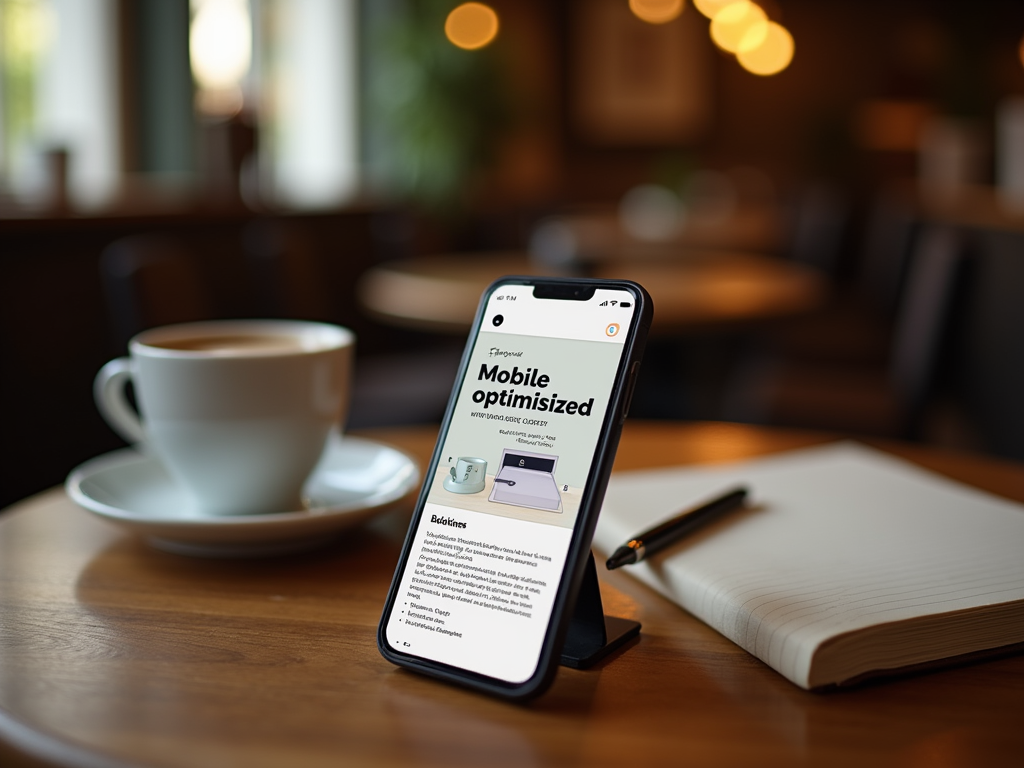
In today’s digital landscape, developing a marketing strategy that prioritizes mobile usage is crucial for success. As more consumers turn to their smartphones for information, shopping, and social interaction, businesses must adapt to this mobile-first approach. This article will guide you through the essential elements of creating an effective marketing strategy tailored for a mobile-centric audience, ensuring you engage potential customers where they are most active.
Understand Your Audience

The foundation of any successful marketing strategy is a deep understanding of your audience. When crafting a mobile-first strategy, consider the specific behaviors and preferences of mobile users. To effectively engage this audience, gather insights through surveys, social media interactions, and analytics. Here are some key points to focus on:
- Demographics: Identify age, location, and interests of your mobile users.
- Device Preferences: Determine which devices they use most frequently, such as smartphones or tablets.
- Usage Patterns: Explore when they are most active online (e.g., evenings or weekends).
- Content Preference: Discover the types of content (videos, articles, infographics) that resonate with them.
- Shopping Habits: Understand how these users prefer to shop—online, in-store, or via apps.
By thoroughly researching your audience, you can tailor your messaging and delivery methods to suit their needs and enhance engagement.
Optimize Your Website for Mobile

Your website is often the first point of contact for potential customers, making it essential that it is mobile-optimized. A mobile-friendly design enhances the user experience, increases engagement, and improves search engine rankings. Here are some strategies to ensure your website meets mobile users’ needs:
- Responsive Design: Ensure your website is responsive, adjusting seamlessly to different screen sizes.
- Fast Loading Times: Optimize images and scripts to reduce loading times; aim for under three seconds.
- Simple Navigation: Create a user-friendly interface that allows for easy mobile navigation.
- Accessible Content: Use larger fonts and buttons, ensuring your content is easily readable without zooming.
- Contact Information: Make it simple for mobile users to contact you, with clickable phone numbers and simple forms.
By prioritizing mobile optimization, you will improve your website’s performance and boost conversion rates.
Leverage Mobile-Specific Marketing Channels
In a mobile-first world, leveraging mobile-specific marketing channels can significantly increase your reach and effectiveness. Social media platforms and apps are prime avenues for engaging mobile users. Consider these strategies:
- Social Media Advertising: Utilize platforms like Instagram and Facebook, where users are highly engaged.
- SMS Marketing: Implement SMS campaigns to reach customers directly with promotions and updates.
- App-Based Marketing: If you have a mobile app, use push notifications to engage users with personalized messages.
- Influencer Collaborations: Partner with influencers to create mobile content that resonates with their followers.
- Location-Based Marketing: Use geo-targeting to send offers and information to users based on their location.
These mobile-specific channels will allow you to connect with your audience more personally and effectively.
Focus on Content Creation
Content remains king, especially in a mobile-first world. However, the way content is consumed on mobile devices differs from desktops. Your content strategy should prioritize concise and engaging formats suitable for mobile consumption:
- Short-form Videos: Create bite-sized videos that capture attention quickly and convey key messages.
- Infographics: Use visual content to communicate complex information in an easily digestible format.
- Mobile-Friendly Blogs: Write shorter blog posts that provide valuable insights without overwhelming the reader.
- Interactive Content: Consider quizzes and polls that engage users and encourage sharing.
- Regular Updates: Keep content fresh and relevant to encourage repeat visits and engagement.
By focusing on content that resonates with mobile users, you can drive more traffic and engagement to your brand.
Utilize Data Analytics
In any marketing strategy, leveraging data analytics is key to measuring success and optimizing future efforts. For a mobile-first strategy, utilize analytics tools to track specific metrics relevant to mobile users, such as:
- Traffic Sources: Identify where your mobile traffic is coming from (social media, search engines, etc.).
- User Behavior: Analyze how users interact with your mobile site, including scroll depth and click patterns.
- Conversion Rates: Track conversion rates for mobile users versus desktop users to measure effectiveness.
- Engagement Metrics: Monitor likes, shares, and comments on mobile content to gauge audience response.
- Customer Feedback: Collect and analyze feedback from mobile users to identify pain points and areas for improvement.
By utilizing these insights, you can continuously refine your strategy and enhance user experience.
Conclusion
Creating a marketing strategy for a mobile-first world requires a thorough understanding of your audience, a commitment to mobile optimization, and a focus on engaging content. By leveraging mobile-specific marketing channels and utilizing data analytics, you can effectively reach and connect with customers on their preferred devices. As consumer habits continue to evolve, staying ahead of the mobile trend is not just beneficial—it’s essential for any business striving for success in the digital age.
Frequently Asked Questions
1. What is a mobile-first marketing strategy?
A mobile-first marketing strategy prioritizes mobile devices in the planning and execution of marketing campaigns, recognizing that a significant portion of users access content primarily through smartphones and tablets.
2. Why is mobile optimization important?
Mobile optimization is critical because it enhances user experience, improves search engine rankings, and ultimately drives conversions by making it easier for users to interact with your brand on their devices.
3. How can I gather data on my mobile audience?
You can gather data on your mobile audience through surveys, Google Analytics, social media insights, and by tracking user behavior on your mobile website or app.
4. What types of content work best for mobile audiences?
Short-form videos, infographics, concise blog posts, and interactive content such as quizzes are all effective formats that cater to the preferences of mobile audiences.
5. How can I measure the success of my mobile marketing strategy?
You can measure success by tracking key metrics such as traffic sources, user engagement, conversion rates, and customer feedback to assess the effectiveness of your marketing efforts.

